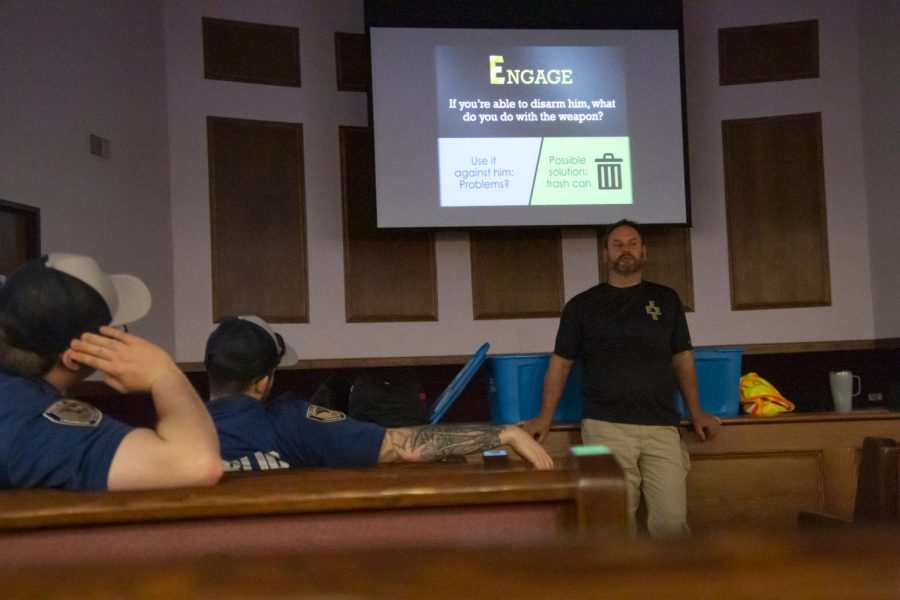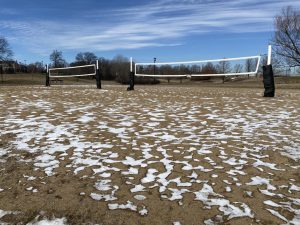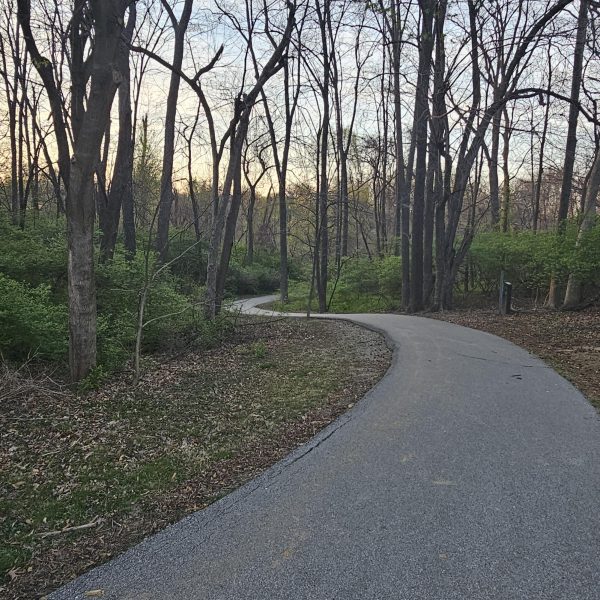Training for threats: Public Safety trains faculty and staff
Photo by Ben Blizzard
Lindenwood’s Assistant Director of Public Safety John Kamm talks during the active shooter training at the Cultural Center on Friday, April 14.
April 18, 2023
Lindenwood Public Safety held an active shooter training for faculty and staff on Friday, April 14.
Current training doctrine has adopted a method known as options-based training. This is because people tend to resort to their training or lack thereof, and providing as many options as possible allows people to adapt to their current needs the best.
Public Safety recommends four principles on what to do when an active threat occurs:
- Educate
- Evade
- Escape
- Engage
Educate: familiarize yourself with how you can best prepare for environmental hazards as well as active violent threats.
Evade: avoid a situation if you’re not involved in it.
Escape: if you are involved, find a way you can leave that situation safely.
Engage: if the other options are not available, grab anything you can to defend yourself.
The point of following these tips is to extend the amount of time, allowing police to intervene. From the moment a call is made to emergency services, three minutes or less is the approximate time that the police are supposed to arrive.
Public Safety and Law enforcement work together to ensure that the police are familiar with the layouts of the campus so they can work proficiently to help save the victims. When the police arrive, their main priority is to address the active threat and then provide aid to those in need.
If the active threat is incapacitated, it is important to be mindful of their weapons. Trying to disarm or remove the weapons from the intruder may not help, but rather confuse the police and cause them to misidentify the actual intruder.
Public Safety as well as faculty and staff were able to participate in the training. The training began with an educational PowerPoint, statistics on school shootings, and tips on how to respond when an active threat occurs.
Participants were then instructed on what would then take place with a starting pistol. People were given instructions on who was in play in this training. People were given stress balls to stimulate weapons, divided into groups, and sent to rooms to train on what they would do in an endangered situation.

















